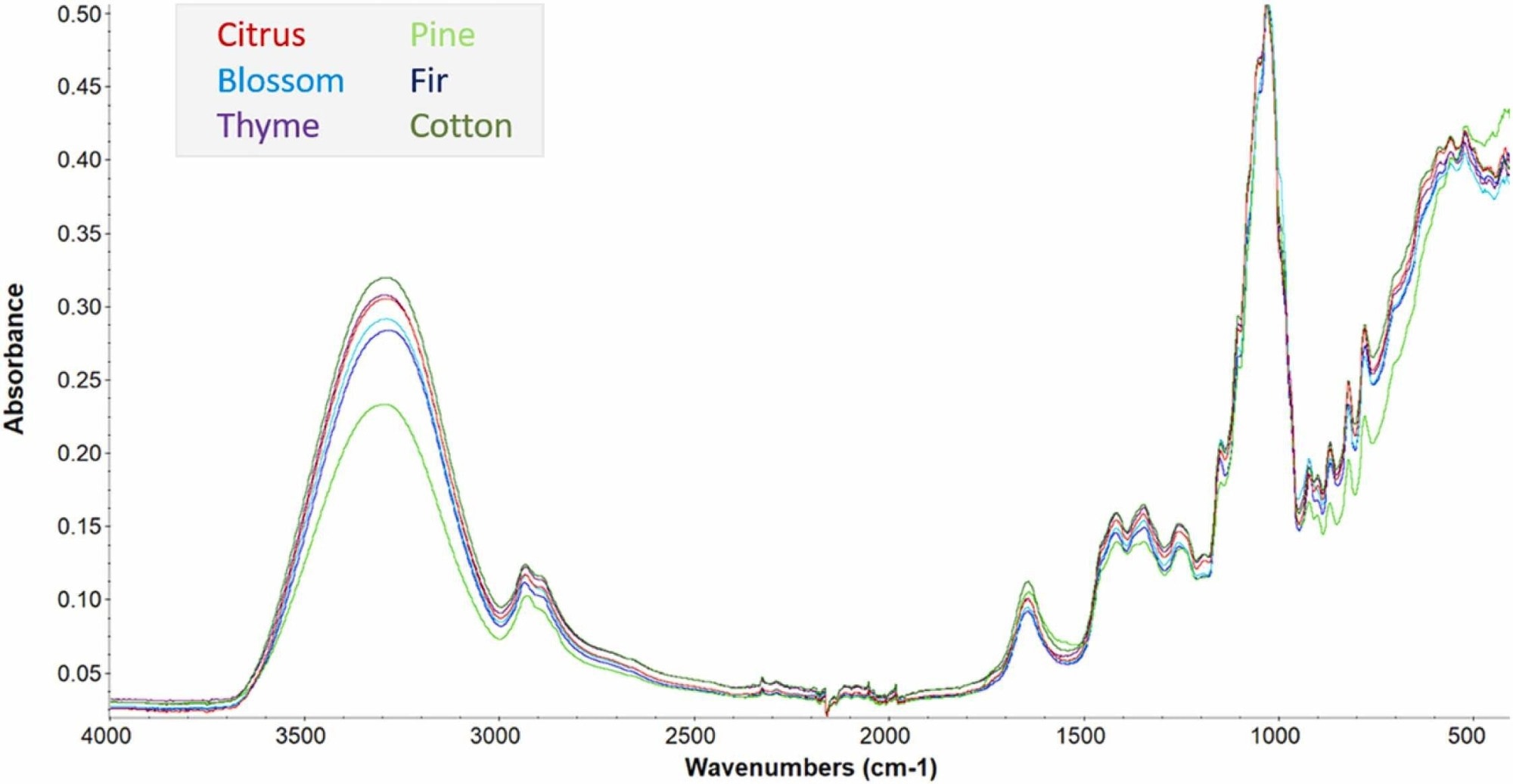Researchers at the University of Chemistry and Technology in Prague have developed a rapid, non-destructive method using attenuated total reflectance Fourier transform infrared spectroscopy (ATR-FTIR) to identify the botanical origin of honey. This method, which efficiently categorizes honey based on origin, has implications for honey pricing and marketability, aiding in more precise and cost-effective product differentiation.
 Indicative FTIR spectra for each of the analyzed honey matrices. Each color represents a different matrix as it is displayed in the legend. Credit: Journal of Food Composition and Analysis (2023). DOI: 10.1016/j.jfca.2023.105276
Indicative FTIR spectra for each of the analyzed honey matrices. Each color represents a different matrix as it is displayed in the legend. Credit: Journal of Food Composition and Analysis (2023). DOI: 10.1016/j.jfca.2023.105276
The study, published in the Journal of Food Composition and Analysis, successfully demonstrates a workflow to swiftly identify the botanical origin of honey, a task that has traditionally necessitated extensive high-end analysis.
Honey's botanical origin influences not only its market price but also its organoleptic properties and potential health benefits, making it a critical factor in consumer choice. This breakthrough comes as a boon to industry stakeholders, who can now categorize honey in a more precise and cost-effective manner.
The researchers tested 22 different pre-processing methods and combinations, including scatter correction methods and spectral derivation methods, using both supervised and non-supervised tools. Their efforts revolved around optimally projecting a diverse array of 51 honey samples from five different botanical origins: blossom, honeydew, cotton, thyme, and citrus.
The study's pivotal finding suggests the most efficient data pre-processing method is the combination of multiplicative scatter correction followed by Savitzky-Golay first derivation. This procedure resulted in excellent recognition (87–100%) and prediction (81–100%) ability when applied in binary models.
The findings highlight the significant yet often overlooked effect of spectral data pre-processing before the application of advanced chemometrics. This novel approach will pave the way for rapid and efficient identification of honey's botanical origin, thereby providing a much-needed enhancement in the world of honey production and marketing.
Source: A.S. Tsagkaris et al, Investigating the impact of spectral data pre-processing to assess honey botanical origin through Fourier transform infrared spectroscopy (FTIR), Journal of Food Composition and Analysis (2023). DOI: 10.1016/j.jfca.2023.105276